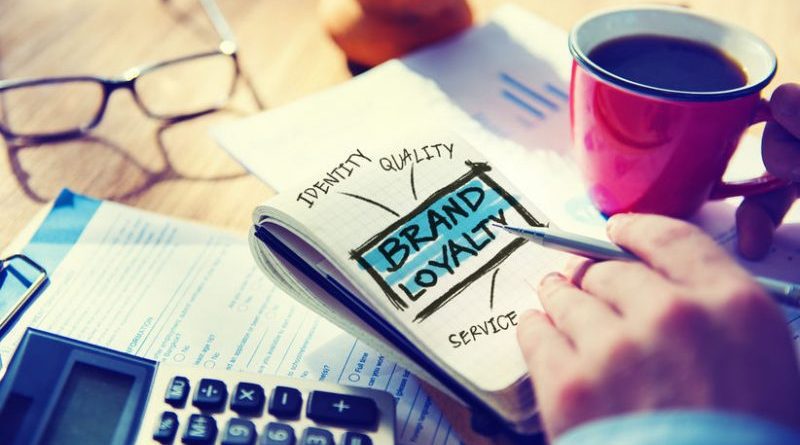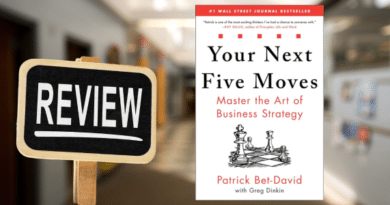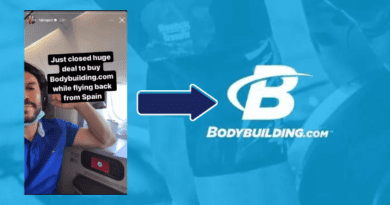Is Brand Loyalty More Powerful Than Price?
I was outside getting some work done a little bit ago and I saw a FedEx truck making a delivery to my neighbor’s house. I wondered what all they got so I went and opened the boxes. Just kidding. But, seeing the FedEx truck made me think about brand loyalty. Personally, for me, I’m a UPS guy. Not that I have some great relationship with people there or anything – it comes down to its who I’ve always used, they made deliveries on time, and when I needed to contact their customer service I always got good service.
Related Article: Who Shows More Loyalty These Days? Brands or Retailers?
My thought process of delivery and freight companies quickly transitioned over to the supplement industry. With so many brands out on the market, what creates brand loyalty and how important is it?
Table of contents

What Exactly is Brand Loyalty?
Brand loyalty refers to the degree of attachment, commitment, and preference that consumers have for a particular brand or product. It signifies the extent to which customers repeatedly choose and purchase products or services from a specific brand over alternatives, even when there are similar offerings available. Brand loyalty often results from positive experiences, emotional connections, and consistent satisfaction with the brand.
Key aspects of brand loyalty include:
- Repeat Purchases: Loyal customers tend to buy products or services from the same brand consistently. They trust the brand’s quality, features, and benefits.
- Resistance to Competitors: Brand loyal consumers are less likely to switch to competitor brands, even when faced with discounts or promotions from those competitors.
- Emotional Connection: Strong brand loyalty often stems from emotional connections that customers develop with the brand. This can be due to the brand’s values, image, and the way it resonates with the consumer’s identity.
- Positive Experience: Consistently positive experiences with a brand’s products, customer service, and overall interactions contribute to building loyalty.
- Brand Advocacy: Loyal customers may become advocates for the brand, recommending it to friends and family based on their positive experiences.
- Reduced Sensitivity to Price: Brand loyal customers may be willing to pay a premium for a brand’s products or services due to their perception of higher quality and value.
- Long-Term Relationship: Building brand loyalty often involves fostering a long-term relationship with customers, which can result in higher customer retention rates and increased customer lifetime value.
- Consistency: Brands that consistently deliver on their promises and maintain a certain level of quality are more likely to develop and sustain brand loyalty.
Companies invest significant efforts in building and maintaining brand loyalty as it can lead to various benefits, including increased sales, improved customer retention rates, higher profitability, and positive word-of-mouth marketing. However, maintaining brand loyalty requires ongoing efforts to ensure that customers continue to have positive experiences and emotional connections with the brand.
What Are Some Examples of Brand Loyalty?
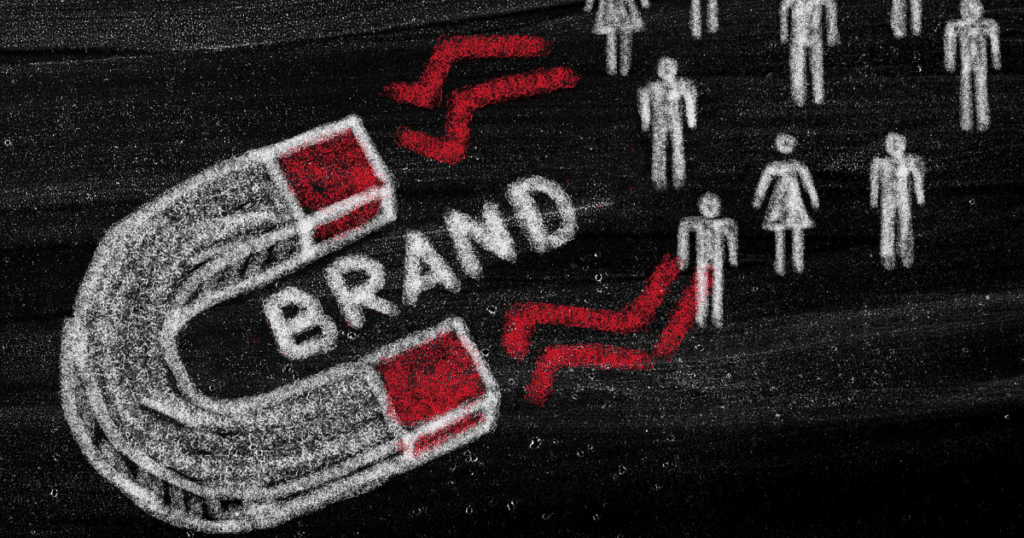
Below are some examples of brand loyalty:
- Apple: Apple has a dedicated customer base known for its strong brand loyalty. Many Apple users stick with the brand across various product lines, from iPhones to MacBooks and other devices, due to the seamless integration of hardware and software, design aesthetics, and the overall Apple ecosystem.
- Nike: Nike’s “swoosh” logo and its association with athletes, performance, and innovation have fostered a loyal following. Many consumers prefer Nike products for their quality and brand image, and they often identify with the values Nike represents.
- Starbucks: Starbucks has created a culture around its brand, with many customers forming a daily routine of visiting Starbucks for their coffee. The company’s consistent quality, personalized ordering options, and inviting store environment contribute to its strong brand loyalty.
- Coca-Cola: Coca-Cola has managed to maintain a loyal customer base for decades. The brand’s heritage, iconic logo, and emotional connection to feelings of happiness and nostalgia contribute to its enduring appeal.
- Amazon Prime: Amazon has built loyalty through its Prime membership program, offering fast shipping, exclusive deals, and access to various digital services. Prime members often continue to use Amazon for their online shopping due to the convenience and benefits offered by the program.
- Loyalty Programs: Many brands, such as Starbucks, Sephora, and airline companies, offer loyalty programs that reward customers for repeat purchases. These programs encourage customers to stick with the brand to earn points, discounts, and exclusive perks.
- Harley-Davidson: Harley-Davidson motorcycles have a passionate following of riders who identify with the brand’s values of freedom, rebellion, and the open road. Many Harley owners remain loyal to the brand throughout their lives.
- Disney: Disney’s brand loyalty is fueled by its beloved characters, theme parks, and entertainment franchises. Families often develop strong emotional connections to Disney and continue to engage with its products and experiences.
- Patagonia: Patagonia’s commitment to environmental sustainability and ethical business practices resonates with a specific segment of conscious consumers. These customers remain loyal due to their alignment with the brand’s values.
- Tech Gadgets: Some consumers are loyal to specific tech brands like Samsung or Sony for their smartphones, TVs, and other electronic devices due to features, design, and perceived quality.
These examples highlight various ways in which brand loyalty is built and maintained, ranging from emotional connections and shared values to convenience and product quality.
What Are the 5 Characteristics of Brand Loyalty?
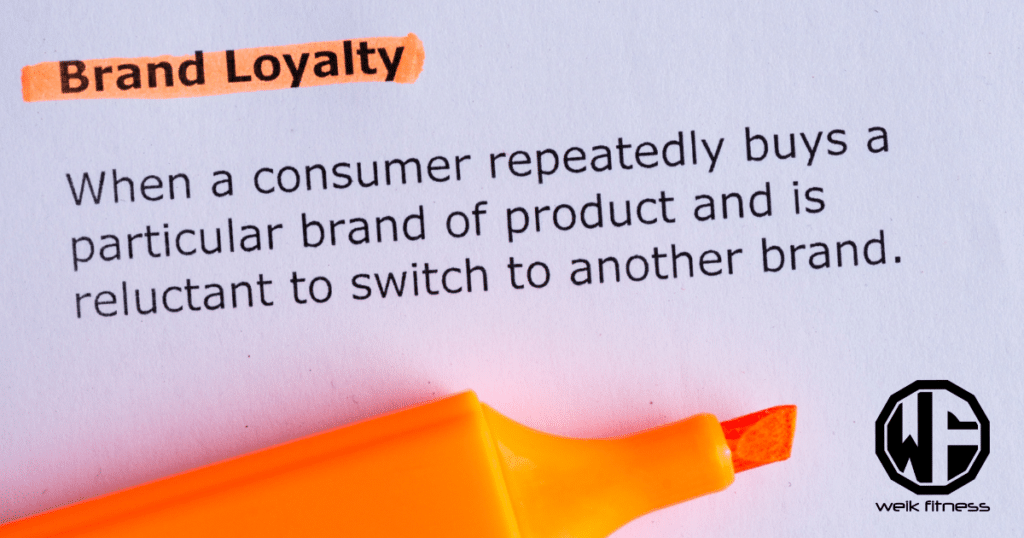
Brand loyalty is often characterized by several key traits that consumers exhibit when they are strongly attached to a particular brand. Here are five characteristics of brand loyalty:
- Repeat Purchases: Loyal customers consistently choose the same brand’s products or services over alternatives. They make repeat purchases without needing external incentives, such as discounts or promotions, to switch to another brand.
- Emotional Connection: Brand loyal customers have a deep emotional connection with the brand. They might feel a sense of belonging, identification, or resonance with the brand’s values, purpose, and image.
- Consistent Engagement: Loyal customers actively engage with the brand beyond just purchasing. This could involve following the brand on social media, participating in loyalty programs, providing feedback, and interacting with the brand’s content.
- Reduced Sensitivity to Price: Brand loyal customers are less sensitive to price fluctuations. They are willing to pay a premium for the brand’s products or services because they perceive higher value and quality associated with the brand.
- Brand Advocacy: Loyal customers become brand advocates by recommending the brand to others. They willingly share positive experiences and recommendations with friends, family, and their social networks, effectively becoming informal brand ambassadors.
These characteristics collectively create a strong bond between the consumer and the brand, leading to sustained loyalty and repeat business. Companies strive to cultivate these characteristics through consistent brand messaging, delivering exceptional customer experiences, and fostering a sense of community around the brand.
How to Build Brand Loyalty with Customers?
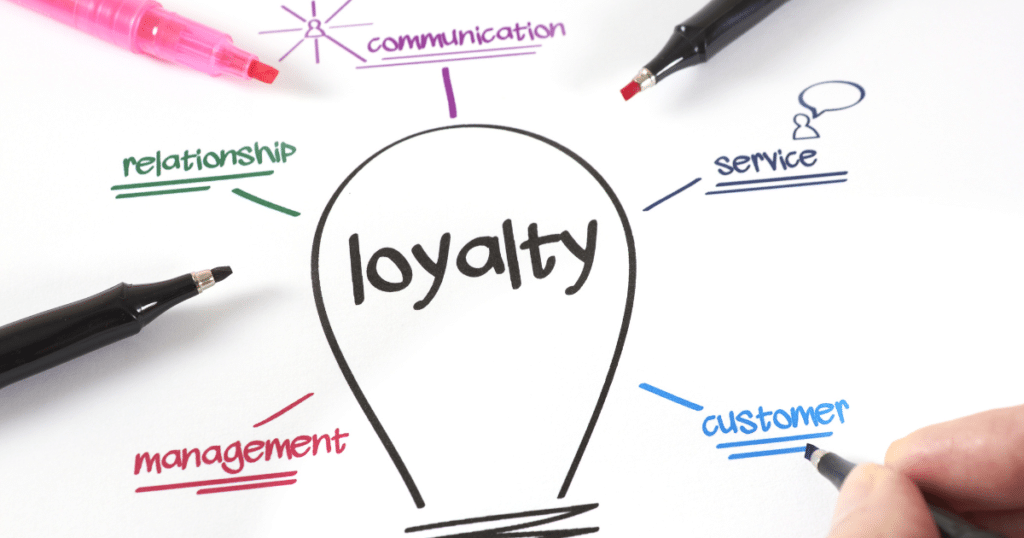
Building brand loyalty requires a strategic and consistent approach that focuses on creating positive experiences, emotional connections, and added value for customers. Here are some effective strategies to build brand loyalty:
- Deliver Exceptional Quality: Consistently provide high-quality products or services that meet or exceed customer expectations. Quality is a fundamental factor in building trust and loyalty.
- Understand Your Audience: Gain a deep understanding of your target audience’s needs, preferences, and pain points. Tailor your products, messaging, and customer experiences to resonate with them.
- Consistent Branding: Maintain a consistent brand identity across all touchpoints, including visual elements, messaging, and customer interactions. This consistency helps build recognition and familiarity.
- Exceptional Customer Service: Provide exceptional customer service at every stage of the customer journey. Address inquiries promptly, resolve issues effectively, and make customers feel valued.
- Personalization: Use customer data to personalize interactions and recommendations. Personalized experiences make customers feel understood and appreciated.
- Emotional Engagement: Develop an emotional connection with customers by sharing your brand’s story, values, and purpose. Authentic storytelling can create a deeper bond.
- Loyalty Programs: Implement loyalty programs that reward customers for repeat purchases. Offer exclusive discounts, early access to products, and other perks to incentivize loyalty.
- Engaging Content: Create valuable and engaging content that educates, entertains, or solves problems for your audience. This positions your brand as a trusted resource.
- Social Media Engagement: Actively engage with customers on social media platforms. Respond to comments, share user-generated content, and create interactive campaigns.
- Surprise and Delight: Occasionally surprise customers with unexpected rewards, personalized messages, or special gifts. These gestures can leave a lasting positive impression.
- Sustainability and Ethics: Incorporate sustainable and ethical practices into your business. Many consumers are loyal to brands that align with their values.
- Feedback and Improvement: Encourage customer feedback and actively make improvements based on their input. This demonstrates that you value their opinions and are committed to enhancing their experience.
- Community Building: Foster a sense of community around your brand. Host events, online forums, or social media groups where customers can connect and share their experiences.
- Consistent Communication: Keep customers informed about new products, updates, and promotions through consistent communication channels. Email newsletters and social media updates can help maintain engagement.
- Post-Purchase Engagement: Continue engaging with customers after they make a purchase. Provide helpful resources, usage tips, and support to enhance their experience with the product.
Remember that building brand loyalty takes time and dedication. It’s an ongoing effort that requires genuine care for your customers’ needs and a commitment to consistently delivering value. By focusing on creating positive experiences and fostering emotional connections, you can build a loyal customer base that advocates for your brand and stays with you for the long term.
Brandy Loyalty: You Like What You Like — Period

A few years back when the economy tanked, people were more price conscious when it came to items that weren’t necessarily a necessity – such as supplements. Back then, people would compare prices left and right in order to pinch pennies together. That being said, the economy has rebounded and people aren’t as worried about how much is left in their bank account to feed their family and keep the lights on in their home.
Related Article: Why Lowering Your Price is a Terrible Business Move
Even when the economy wasn’t good, there were still consumers who stuck with their “go-to” brand(s). Why? Because they are loyal. This can be for many different reasons. Someone could stick with a brand because it’s all they’ve ever used and they don’t know any better. Some people trust certain brands and therefore only purchase what’s in their portfolio of products. Others have attained success using a certain brands’ products and therefore only want to use what they know works. While others have simply had better customer service with a brand and appreciate that they care about their customers. There seems to be more brand loyalty these days which is really interesting.
Regardless of which reason above (or one not mentioned), brand loyalty one way or another comes into play. There are brands out on the market who are selling protein powders for $10-20 more than all of the other competitors, yet people are still purchasing their blended whey product that quite frankly is inferior to other brands on the market. Why? Loyalty. People are more willing to pay more and be vested in a brand if they feel some sort of loyalty. Regardless of what competitors come out with, they will never stray far from the brand and while they might try something different, they always end up coming back.
Does Price Mean Anything Today?
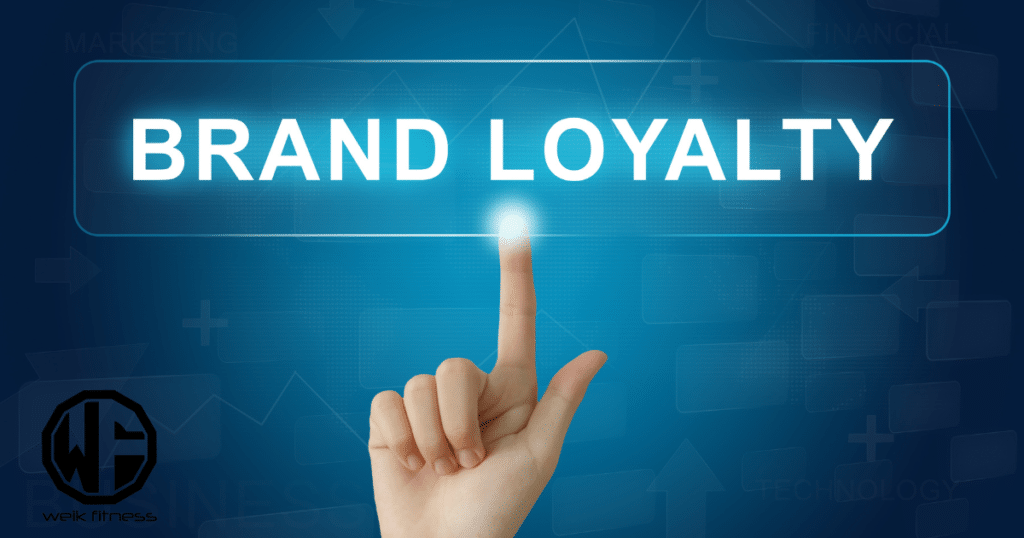
To an extent, yes. But, I think it (again, this is my opinion and what I’m seeing) comes down to what was mentioned above – people like what they like. People who like Starbucks coffee are more willing to wait in insane drive-thru lines and spend the extra money rather than go to Dunkin Donuts where they can get a cheaper cup of coffee quicker, but not like the coffee itself as much. Then on the flip side, you have people who make their own coffee in the morning because they are loyal to Folgers or Maxwell House coffee. To each his or her own.
Related Article: Retail Experience is the ONLY Way Supplement Stores Survive
All of this being said, price is a great way to guide entry into a market though. If someone is just starting out in the gym and learns about protein powder, what are they more willing to purchase for an initial trial purchase? A protein that costs $50 or a protein that costs $20? The $20, right? And if you look at the brands in the market that are the least expensive, they are generally brands that aren’t the highest quality (not always the case, but for the most part). This consumer is also generally buying their first entry product (again, say protein powder) either at a retailer such as Walmart (since they already shop there), or online somewhere like Amazon (again, because they buy everything else for their household there).
Click here to continue reading…


*Disclosure: This article may contain affiliate links or ads, which means we earn a small commission at no extra cost to you if you make a purchase through these links. These commissions help support the operation and maintenance of our website, allowing us to continue producing free valuable content. Your support is genuinely appreciated, whether you choose to use our links or not. Thank you for being a part of our community and enjoying our content.
PLEASE CONSIDER SHARING THIS ON YOUR SOCIAL MEDIA TO HELP OTHERS LEARN MORE ABOUT THIS TOPIC.


